Ayumi Hamasaki (浜崎 あゆみ, Hamasaki Ayumi?, also 浜崎歩) (born October 2, 1978) is a Japanese singer-songwriter and former actress. Also called Ayu by her fans, Hamasaki has been dubbed the "Empress of Pop" due to her popularity and widespread influence in Japan. Born and raised in Fukuoka, she moved to Tokyo at fourteen to pursue a career in entertainment. In 1998, under the tutelage of Avex CEO Max Matsuura, she released a string of modestly selling singles that concluded with her 1999 debut album A Song for XX. The album debuted atop the Oricon charts and stayed there for four weeks, establishing her popularity in Japan.
Because of her constantly changing image and tight control over her artistry, Hamasaki's popularity extends across Asia; music and fashion trends she has started have spread to countries such as China, Singapore, and Taiwan. She has appeared in or lent her songs to many advertisements and television commercials. Though she originally supported the exploitation of her popularity for commercial purposes, she later reconsidered and eventually opposed her status as an Avex "product".
Since her 1998 debut with the single "Poker Face", Hamasaki has sold over 50 million records in Japan, ranking her among the best-selling singers in the country. As a female singer, Hamasaki holds several domestic records for her singles, such as the most number-one hits, the highest sales, and the most million-sellers. From 1999 to 2009, Hamasaki had at least one single each year top the charts. Hamasaki is the first female singer to have eight studio albums since her debut to top the Oricon and first artist to have an album debut at number-one for 11 consecutive years.
Hildhood and Early Endeavors
Born in Fukuoka Prefecture, Hamasaki was raised by her mother and grandmother. Her father had left the family when she was three and never again came into contact with her. Because her mother worked to support the family, Hamasaki was primarily taken care of by her grandmother.
At age seven, Hamasaki began modeling for local institutions, such as banks, to supplement the family's income. She continued this career path by leaving her family at fourteen and moving to Tokyo as a model under SOS, a talent agency. Her modeling career did not last long; SOS eventually deemed her too short for a model and transferred her to Sun Music, a musicians' agency. Under the name of "Ayumi", Hamasaki released a rap album, Nothing from Nothing, on the Nippon Columbia label. She was dismissed from the label when the album failed to chart on the Oricon. After this failure, Hamasaki took up acting and starred in B-movies such as Ladys Ladys!! Soucho Saigo no Hi and television dramas such as Miseinen, which were poorly received by the public. Growing dissatisfied with her job, Hamasaki quit acting and moved in with her mother, who had recently moved to Tokyo.
Hamasaki was initially a good student, earning good grades in junior high school. Eventually, she lost faith in the curriculum, thinking that the subjects taught were of no use to her. Her grades worsened as she refused to put her mind to her studies. While living in Tokyo, she attempted to further her studies at Horikoshi Gakuen, a high school for the arts, but dropped out in the first year. Because Hamasaki did not attend school or have a job, she spent much of her time shopping at Shibuya boutiques and dancing at Velfarre, an Avex-owned disco club.
1998–1999: Rising Popularity
Hamasaki's debut album under Avex, A Song for XX (1999), was "unassuming": its singles were not major hits, and the tracks, composed by Yasuhiko Hoshino, Akio Togashi (of Da Pump), and Mitsuru Igarashi (of Every Little Thing), were "cautious" pop-rock songs. However, Hamasaki's lyrics, introspective observations about her feelings and experiences that focused on loneliness and individualism, resonated with the Japanese public.[17] The songs gained Hamasaki a growing following, and the release of the album was a success: it topped the Oricon charts for five weeks and sold over a million copies.[ For her achievements, she earned a Japan Gold Disc Award for "Best New Artist of the Year".
With Ayu-mi-x (March 1999), the first of a series of remix albums, Hamasaki began moving beyond the pop-rock of A Song for XX and began to incorporate different styles including trance, dance, and orchestra. Composed by Yasuhiko Hoshino and Dai Nagao (of Do As Infinity), the singles released later that year were dance tunes and earned Hamasaki her first number-one single ("Love: Destiny") and first million-selling single ("A"). Her second studio album, Loveppears (November 1999), not only topped the Oricon charts, it sold nearly 3 million copies. The album also showcased a change in Hamasaki's lyrics. Though the lyrics of Loveppears still dealt with loneliness, many of them were written from a third-person perspective. In support of Loveppears, she held her first tour, Ayumi Hamasaki Concert Tour 2000 A.
At Velfarre, she was introduced to her future producer, Max Matsuura, through a friend. After hearing Hamasaki sing karaoke, Matsuura offered her a recording deal, but Hamasaki suspected ulterior motives and turned the offer down. He persisted and succeeded in recruiting her for the Avex label in the following year. Hamasaki started vocal training, but skipped most of her classes after finding her instructors to be too rigid and the classes dull. When she confessed this to Matsuura, he sent her to New York to train her vocals under another method. During her foreign sojourn, Hamasaki frequently corresponded with Matsuura and impressed him with her style of writing. On her return to Japan, he suggested that she try writing her own lyrics.
2000–2002: Commercial peak
From April to June 2000, Hamasaki released the "Trilogy", a series of singles consisting of "Vogue", "Far Away", and "Seasons". The lyrics of these songs focused on hopelessness, a reflection of Hamasaki's disappointment that she had not expressed herself thoroughly in any of her previous lyrics and a sense of shame of her public image. Likewise, many of the songs she wrote for her subsequent studio album, Duty (September 2000), involved feelings of loneliness, chaos, confusion, and the burden of her responsibilities. She described her feelings after the writing as "unnatural" and "nervous". The musical style was darker as well; in contrast with Loveppears, Duty was a rock-influenced album with only one dance song, "Audience". Duty resonated with fans: the "Trilogy" were "hit singles" ("Seasons" was a million-seller), and the album became Hamasaki's best-selling studio album. At the end of 2000, Hamasaki held her first New Year countdown concert at the Yoyogi National Gymnasium.
In 2001, Avex forced Hamasaki to release her first compilation album, A Best, on March 28, putting the album in "competition" with Hikaru Utada's second studio album, Distance. The "competition" between the two singers (which both claimed was merely a creation of their record companies and the media) was supposedly the reason for the success of the albums; both sold over 5 million copies. In support of Duty and A Best, Hamasaki held a tour of Japan's domes, making her one of few "top-drawer" Japanese artists to hold a concert at the Tokyo Dome.
I am... (January 2002) marked several milestones for Hamasaki. Hamasaki increased her control over her music by composing all of the songs on the album under the pseudonym "Crea"; "Connected" (November 2002) and "A Song Is Born" (December 2001) were the exceptions. I am... also showed evolution in Hamasaki's lyrical style: it was a retreat from the themes of "loneliness and confusion" of some of her earlier songs. Moved by the September 11 attacks, Hamasaki revised her vision of I am..., focusing on issues such as faith and world peace. "A Song Is Born", in particular, was directly influenced by the events. The single, a duet with Keiko Yamada, was released as part of Avex's non-profit Song+Nation project, which raised money for charity.[ She also dropped the planned cover and opted instead to be portrayed as a "peace muse", explaining,
I had a completely different idea for the cover at first. We'd already reserved the space, decided the hair and makeup and everything. But after the incident, as is typical of me, I suddenly changed my mind. I knew it wasn't the time for gaudiness, for elaborate sets and costumes. It sounds odd coming from me, but I realize what I say and how I look has a great impact.
The outlook inspired by the September 11 attacks extended beyond I am.... In 2002, Hamasaki held her first concert outside Japan, at the MTV Asia music awards ceremony in Singapore, a move interpreted as the beginning of a campaign prompted by a sluggish Japanese market. At the ceremony, she received the award for "Most Influential Japanese Singer in Asia". In support of I am..., Hamasaki held two tours, Ayumi Hamasaki Arena Tour 2002 A and Ayumi Hamasaki Stadium Tour 2002 A. In November 2002, as "Ayu", she released her first European single, "Connected", a trance song from I am... composed by DJ Ferry Corsten. It was released in Germany on the Drizzly label. Hamasaki continued to release singles (all of them remixes of previously released songs) in Germany on Drizzly until 2004.
After performing at the 2002 MTV Asia music awards, Hamasaki felt that by writing only Japanese lyrics, she was not able to bring her "message" to other countries. Realizing that English was a "common global language", she used it for the first time on her next studio album, Rainbow (December 2002). Though she did not compose as much as on I am... (only nine of the album's fifteen songs), she was still heavily involved in the production. The album was stylistically diverse; Hamasaki included rock- and trip-hop-influenced tracks as well as "summery", "up-tempo" and "grand gothic" songs and experimented with new techniques such as gospel choruses and the yells of an audience. The lyrics were also varied: themes in the album included freedom, the struggles of women, and "a summer that ends in sadness". "H", the album's second single, became the best-selling single of 2002. Hamasaki starred in a short movie, Tsuki ni Shizumu, which was created to be the video for the album's third single, "Voyage".
Personal life
Hamasaki dated singer-actor Tomoya Nagase since her brief acting career, and they publicly announced their relationship in 2001.[108] Six years later, the media circulated rumors that the couple were about to get married; however, on July 13, Hamasaki announced that they had broken up. Though Hamasaki did not explain the reason for the split, she stated that they had parted amicably and the two remained friends.
In a January 8, 2008 entry on her TeamAyu blog, Hamasaki revealed that an inoperable condition, possibly tinnitus or Ménière's disease, had caused complete deafness in her left ear. She disclosed that she had been diagnosed with the condition in 2006 and that the problem dated back to 2000.[134] Despite the setback, Hamasaki stated that she wished to continue singing, and that she would "not give up" on her fans and that "as a professional", she wanted to "deliver the best performance for everyone".
Style and influence
Because of the widespread influence of her music, Hamasaki has often been compared to Madonna, whom Hamasaki cites as one of her influences,along with soul musicians Babyface and En Vogue and rock bands Led Zeppelin and Deep Purple. She also admires Michelle Branch, Kid Rock, Joan Osborne, Seiko Matsuda, Rie Miyazawa, and Keiko Yamada; these diverse influences have led to the variety of her own music.
Hamasaki began commissioning remixes of her songs early in her career, and this also influenced the diversity of her music. Found on many of her records, these remixes span different genres of electronic dance music including Eurobeat, house, and trance, as well as acoustic genres such as classical and traditional Chinese music. She has employed Western as well as Japanese musicians; among those she has worked with are Above & Beyond, the Lamoureux Orchestra of France, and traditional Chinese music ensemble Princess China Music Orchestra.
Hamasaki's live performances are often lavish productions that use "grand-scale props". Performances of "Mirrorcle World" in her 2008 tour of Asia used a floating ship.
Hamasaki has released more than a hundred original songs; through them, she has covered a wide range of musical styles, such as dance, metal, R&B, progressive rock, pop, and classical. She uses different instruments and techniques including piano, orchestra, gospel choirs, guitars, traditional Japanese strings, music boxes, and effects such as yells, claps, and scratching. She frequently employs others to compose; as she has explained, "I'm not a professional; I lack even basic knowledge about writing music." However, she started to compose her own melodies after her staff had failed to compose a tune for "M" that appealed to her.Wanting to produce works faithful to her visions, Hamasaki took control of most aspects of her artistry. I am... is representative of this stage in Hamasaki's career; she directed the production of its songs, videos, and artwork. Later in her career, however, she began delegating many tasks, including composition, to her staff.
Hamasaki is often involved in the artistic direction of her live performances; they are often lavish productions that use a variety of props, extravagant costumes, and choreographed dances. She has used large video screens, fireworks, simulated rain drops, trick stage floors, and suspended devices. She is also involved in the artistic direction of her promotional videos and tries to convey in the videos the meanings or feelings of their respective songs. The themes of the videos are varied; she has made "sad and fragile" or "emotional" videos ("Momentum", "Endless Sorrow"), "refreshing" videos ("Blue Bird", "Fairyland"), and humorous videos ("Evolution", "Angel's Song", "Beautiful Fighters"). Some of her videos contain short storylines: the video of "Voyage" depicts Hamasaki as a woman in a mental hospital whose previous incarnation was a woman in feudal Japan who was sacrificed to the moon; the video of "Endless Sorrow" features a young boy living in a society where speaking is forbidden by law. Additionally, the videos of "Fairyland", "My Name's Women", and "Jewel" are among the top twenty or so most expensive music videos, making Hamasaki the only non-Anglophone to hold such a distinction.



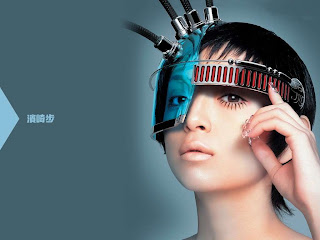
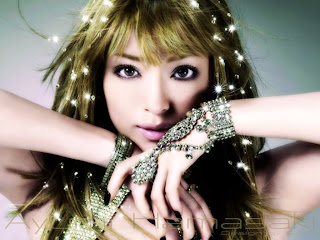

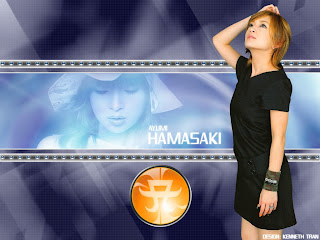




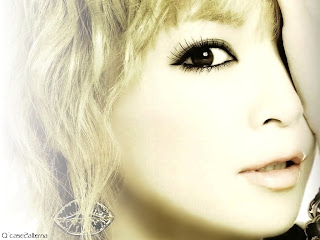
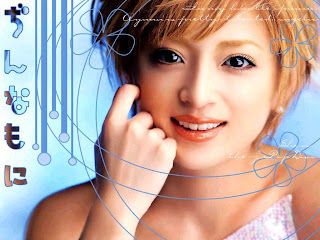


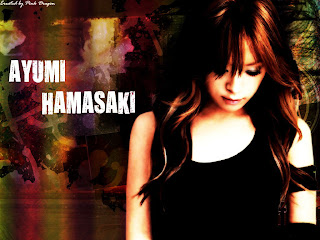




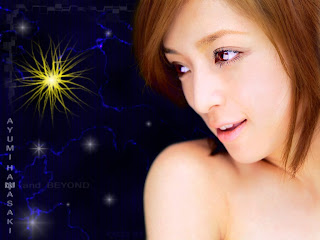











0 comments:
Post a Comment